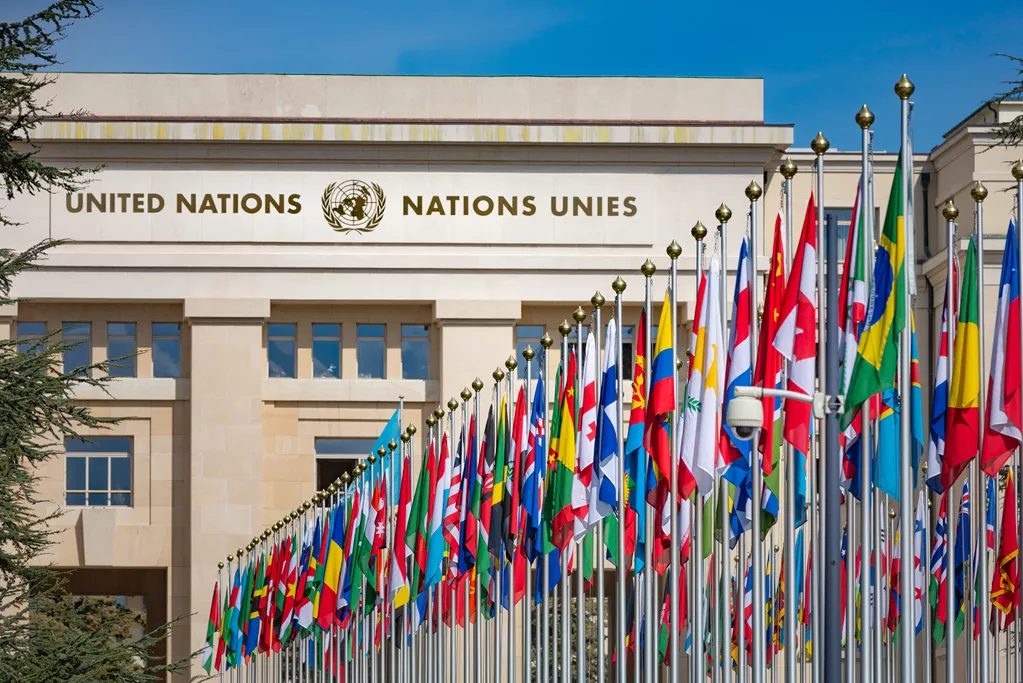advertisement
How To Get A Job With The United Nations

Meet Kate McBride who at the time of this interview was the Chief of ICT Services for the United Nations Office in Nairobi (UNON); and is now Director, Administrative Services, Human Resources and ICT, UN Framework Convention on Climate Change (UNFCCC) in Bonn, North Rhine-Westphalia, Germany.
She is driven by her commitment to people and the planet. In actual fact, McBride serves in two roles: as Chief of ICT, UNON – responsible for strategic planning and daily IT operations for 4,000+ clients working in 66 United Nations’ entities around the globe, and the other as Chief of the United Nations Regional Technology Centre, Africa, where she is a bridge to IT opportunities and challenges in Africa that are leveraged, supported and enhance the global UN system.
Her storytelling is relaxed, yet enthusiastic. She begins with her UNON success story. It’s shift in 2019 into a client-centric, cloud-based, green services documents critical transformative with the advent of COVID-19. It literally shifted clients over a weekend from a UN campus-based working environment into a working from anywhere and everywhere situation. Given the UN’s international staff profile, this had McBride and her team quickly pivoting to facilitate remote working from Australia to Uganda.
advertisement
“How do you even get into the UN?” is a frequent question, and one I have asked myself. McBride’s forthright response to this question is “It is very possible! It just takes time, research and planning.” I am also curious how she, clearly focused and goal-oriented, navigated the complex UN system.
She starts by explaining that navigating the UN recruitment process may be different from other employers. Qualified applicants take a written assessment test. If they pass, they go on to a competency-based interview. This is followed by extensive reference checks and finally, an offer of employment. A competitive process that can take up to six months. While the process is somewhat unique, the UN’s hiring goal is the same as pretty much any other employer; to create a diverse, inclusive workforce committed to the values of the organisation and its mission.
The first step to working in the UN is to prepare for your application.
advertisement
- Research the area you are interested in working,
- assess how your skills complement that work,
- reach out to staff working in that area,
- and use LinkedIn and other social networks to develop a friend in the UN network.
McBride’s story begins in 1996 after reading an article on information management. It just happened to spotlight The Food and Agriculture Organisation, Rome. Impressed, she called the UN staff member quoted in the article. That initial phone call and outreach was the start of her UN career. Her experience, like her words, reiterates the benefits of research, and outreach, highlighting specific expertise and interests mapping the path to the UN.
The McBride Vision – Innovate, Improve, Green
When Kate joined UNON in 2018, an opportunity was very clear to her. It was to provide greener, cost-effective, client-driven services. This required a shift in the location of ICT services from the UN campus in Nairobi, to the UN cloud. A bigger hurdle was changing the mindset of the team from providing basic, “keep the lights on” ICT services, to customizing and creating services to meet new clients and emerging requirements.
advertisement
Over the course of 2018 and 2019, Kate and the UNON ICT team reduced on-premises solutions by 95 per cent, the data centre footprint by 53 per cent, and carbon emissions by 147,000 metric tonnes. Given that current services are primarily cloud-based and cloud-driven, the helpdesk support and communication services for the 4,000 global clients stem from the cloud, supported by a virtual service desk. So far, the team has been rewarded with client satisfaction ratings of 94 per cent – or better!
The Alliance – Empowering And Acknowledging Women In ICT
There is something powerful and transformative in the UN’s inclusive and diverse workforce. McBride has found strength in continuing to build it, especially as varied perspectives tend to yield far more creative and richer solutions. It is one of the reasons she is tackling gender disparity in IT. Kate continues to test new ways to address impediments to accelerating and sustaining creativity and progress in teams and projects. Just as she advocates for being bold and confident when applying for jobs, she emphasised the practical need for women to continue to be empathetic and men to be bold in supporting women. Not just with hiring and fair performance reviews, but support on projects and sharing and giving women the opportunity to be recognised and to shine.
The work is ongoing. As an outlet for her frustration, in her previous role at the UN Office for the Coordination of Humanitarian Affairs (UN OCHA), she built an informal alliance of colleagues that comprises women and men from across the UN who are committed to ensuring women succeed in their current roles, projects and teams. As she met and worked with colleagues who shared this inclusive and encouraging mindset, she would ask them to join the alliance. It required no signed pledges and had no website outlining goals. Most importantly, they continue to support women, remove obstacles, and give women due exposure and credit. Over the last two years, this unique alliance has grown to become a cornerstone of women in IT in the UN. Where they meet, motivate and support each other.
This article was first published in the May 2021 issue of CIO Africa magazine.